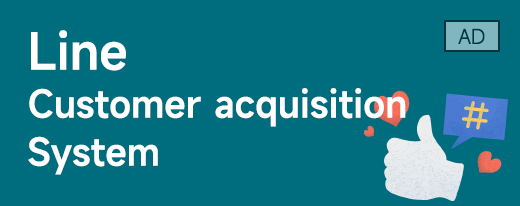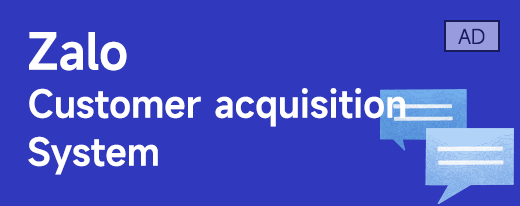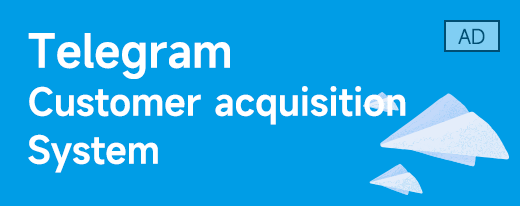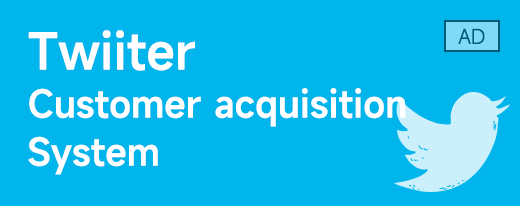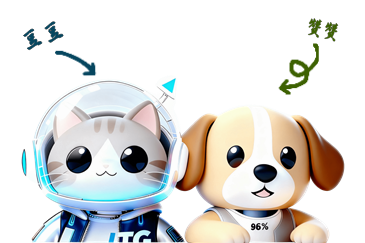In the era of digital operations, many enterprises face a common dilemma: as their business expands, customer data becomes scattered across different platforms and systems, forming "data silos." This disorganized data not only fails to provide effective support for decision-making but also leads to low operational efficiency and delayed responses to customer needs. The key to solving this problem lies in professional data integration and management tools. With its powerful cross-platform integration capabilities, the ITG Global Management Tool helps enterprises transform scattered data into organized assets and fully unlock the commercial value behind the data. This article will detail how to achieve efficient data management through the ITG Global Management Tool and inject new vitality into enterprise operations.
Enterprises often face multiple pain points in data management:
- Customer information is scattered across multiple channels such as CRM systems, social media backends, and e-commerce platforms, with inconsistent data formats;
- Some data is not updated in a timely manner, leading to redundancy or gaps;
- Data cannot be shared in real-time across departments, resulting in low collaboration efficiency.
These issues directly prevent enterprises from accurately understanding customer needs and leave operational strategies without data support.
The core value of data integration is reflected in three dimensions:
- Improving decision-making efficiency: An integrated unified data view allows enterprises to quickly access full-lifecycle customer information, avoiding decision biases caused by fragmented data.
- Optimizing customer experience: By integrating customer interaction data across channels, enterprises can build comprehensive customer profiles, implement "one-to-one" personalized services and communication, and reduce the cost of repeated customer communication.
- Reducing operational costs: Data integration cuts down the time cost of manual data sorting and cross-departmental data retrieval, while avoiding resource waste caused by data errors.
Research shows that enterprises with effective data integration experience an average 30% reduction in operational decision cycles, a 25% decrease in customer complaint rates, and a 4-6x improvement in data utilization efficiency compared to traditional management models. It is evident that efficient data integration has become a core pillar of enterprises’ digital transformation.
Relying on an advanced technical architecture, the ITG Global Management Tool builds a full-process data management system covering "collection - integration - analysis - application," solving core enterprise issues such as scattered data, incompatible formats, and delayed updates. Its core technical advantages are mainly reflected in the following three aspects:
It supports cross-platform and multi-format data collection, covering:
- CRM systems (e.g., Salesforce, WeChat Work);
- E-commerce platforms (e.g., Shopify, Amazon);
- Social media (e.g., Facebook, WhatsApp);
- Offline store POS systems.
Whether it is structured data (e.g., basic customer information, transaction records) or unstructured data (e.g., customer chat records, feedback messages), automated collection is achievable without manual entry, with a collection accuracy of over 99.2%.
Through AI algorithms, it automatically identifies redundant data, corrects errors (e.g., phone numbers with inconsistent formats, duplicate customer profiles), and standardizes data according to enterprise-defined rules. Meanwhile, the tool can establish data association models to match and integrate information of the same customer across different channels, forming a complete 360° customer profile and solving the problem of "one customer, multiple data profiles."
Adopting distributed data synchronization technology, it ensures real-time data updates across channels with a delay of no more than 10 seconds, ensuring every piece of data obtained by the enterprise is timely. In terms of data security, the tool complies with international security standards such as GDPR and ISO 27001. Measures including data encryption, hierarchical permission management, and operation log tracking are implemented to ensure enterprise data is not leaked or lost, eliminating security concerns in data management.
To achieve data integration by introducing the ITG Global Management Tool, enterprises need to follow a scientific implementation process to avoid poor results due to blind operations. The following are practice-proven implementation strategies:
First, enterprises need to clarify their data management goals: Is the focus on customer profile building, operational efficiency improvement, or decision-making data support? Subsequently, the ITG team will, based on the enterprise’s business scenarios:
- Sort out core data sources (e.g., prioritizing integration of high-value channel data);
- Determine data integration dimensions (e.g., basic customer information, interaction records, transaction data);
- Develop a personalized implementation plan.
For example, retail enterprises can prioritize integrating sales data from online e-commerce platforms and offline stores, while service-oriented enterprises can focus on integrating customer consultation records and service feedback data.
It is recommended to adopt a phased implementation approach of "core first, expansion later" to reduce integration difficulty:
- Phase 1 (1-2 weeks): Complete connection and collection of core data channels (e.g., CRM systems and major transaction platforms) to achieve unified management of basic data and solve the problem of "incomplete data access."
- Phase 2 (2-3 weeks): Integrate unstructured data such as social media and customer service chats, launch intelligent data cleansing, and build initial customer profiles to solve the problem of "inaccurate data."
- Phase 3 (1-2 weeks): Unify data permissions across departments to achieve real-time data sharing, and connect to the enterprise’s existing operational tools (e.g., marketing automation platforms, customer service systems) to ensure integrated data is truly applied in business scenarios.
Data integration is not a "one-and-done" task; continuous data quality monitoring is required. The ITG tool can automatically generate data quality reports covering indicators such as data completeness, accuracy, and update frequency. Enterprises can set early warning thresholds (e.g., triggering alerts when data accuracy is below 95%) to promptly identify and resolve data issues. Additionally, it is recommended to hold monthly data review meetings to adjust data integration strategies based on operational results. For instance, one enterprise discovered through a review that "customer feedback data was not updated in a timely manner," and subsequently optimized the collection frequency, reducing customer issue response time by 40%.
Data integrated by the ITG Global Management Tool can be widely applied in multiple links of enterprise operations, transforming data value into actual business results:
Based on integrated customer profiles (e.g., spending power, interaction frequency, interest preferences), enterprises can achieve refined customer segmentation. For example, a beauty brand integrated customer e-commerce purchase records and social media interaction data via the ITG tool, dividing customers into three categories: "high-frequency, high-AOV loyal customers," "low-frequency trial customers," and "potential interest customers." Targeted strategies were developed for each segment: exclusive new product trials for loyal customers and personalized coupons for potential customers. Ultimately, customer repurchase rates increased by 35%.
Customer service teams can retrieve full-channel customer interaction records in real-time via the ITG tool, eliminating the need for customers to repeat their issues. For example, when a customer inquires about order progress, customer service can directly access the customer’s order channel, logistics information, and historical consultation records to provide a quick and accurate response. As a result, average customer satisfaction scores increased by 1.8 points.
The integrated data analysis function helps enterprises identify high-conversion marketing channels and optimize marketing content. For example, a cross-border e-commerce enterprise used the ITG tool to analyze and find that the marketing combination of "Facebook ads + WhatsApp follow-up" had the highest conversion rate. It then increased investment in this channel, boosting marketing ROI by 2.2x.
A chain retail enterprise with over 50 offline stores previously faced the problem of "data separation between online e-commerce and offline stores": online customers could not enjoy offline membership benefits, and offline member consumption data could not be synchronized online. This led to inconsistent customer experiences and low operational efficiency.
After introducing the ITG Global Management Tool, the enterprise implemented three optimization steps:
- Integrated data from online e-commerce platforms (Tmall, mini-programs), offline POS systems, and membership systems to achieve real-time synchronization of customer information and consumption records;
- Built customer profiles based on integrated data, distinguishing between "online-preference customers," "offline-preference customers," and "omnichannel customers";
- Pushed corresponding benefits to different customer groups, such as offline store experience coupons for online customers and online exclusive discounts for offline customers.
Implementation Effects:
- The proportion of cross-channel customer consumption increased from 12% to 38%;
- Member repurchase rate increased by 45%;
- The time for the operation team to retrieve data was reduced from an average of 40 minutes to 5 minutes.
A B2B mechanical equipment enterprise had customer data scattered across sales staff’s mobile phones, Excel spreadsheets, and an old CRM system. Issues such as "loss of customer information," "incomplete follow-up records," and "difficulty in handover between new and old sales staff" led to a high customer churn rate.
After integrating data via the ITG tool, the enterprise achieved:
- Unified storage of basic customer information, communication records, quotes, and contract documents;
- Automatic reminders for sales staff to follow up with customers (e.g., regular maintenance, contract expiration reminders);
- Quick access to complete customer profiles for new sales staff when taking over customers, avoiding handover gaps.
Implementation Effects:
- Customer information completeness rate increased from 65% to 98%;
- Customer follow-up timeliness rate increased by 70%;
- Customer churn rate decreased by 32%.
Data integration is a dynamic optimization process, and enterprises need to continuously adjust strategies based on business development. The following are best practice recommendations for using the ITG tool:
As business expands, it is necessary to add or adjust data integration dimensions in a timely manner. For example, when an enterprise launches a new product category, it can add the "new product preference" indicator to customer profiles; when launching live-streaming marketing, it needs to include the collection and integration of "live interaction data."
The value of data tools cannot be realized without proficient use by employees. It is recommended that enterprises organize full-staff training in the early stage of implementation, especially for sales, customer service, and operation teams, to ensure employees master basic operations of data retrieval and analysis. Regularly share data application cases to enhance employees’ "data thinking."
When integrating data, enterprises must strictly comply with local data privacy regulations (e.g., China’s Personal Information Protection Law, EU GDPR), collect only customer information necessary for business, clearly inform customers of data usage purposes, and avoid over-collection. The ITG tool’s hierarchical permission function ensures employees in different positions can only access data within their job scope, further safeguarding data privacy.
In the era where business is driven by data, "data silos" have become a major obstacle to enterprise development. Efficient data integration and management are key for enterprises to improve operational efficiency, optimize customer experience, and achieve differentiated competition. Through core capabilities such as multi-source data integration, intelligent cleansing, and real-time synchronization, the ITG Global Management Tool helps enterprises transform scattered data into applicable assets, enabling data to truly serve business growth.
It is important to emphasize that data integration is not the ultimate goal; empowering business and creating value through data is the core. In the process of using the ITG tool, enterprises should always focus on "customer needs" and "business goals," continuously optimize data management strategies, and let data become an "engine" driving the sustainable development of the enterprise.
Today, more and more enterprises have achieved data management upgrades through the ITG tool and launched a new model of efficient operations. If your enterprise is also facing problems of scattered data and inefficient management, start with data integration and leverage professional tools to unlock data value and inject new vitality into your business development!
ITG Global ScreeningIt is a world-leading number screening platform that combines
Global mobile phone number segment selection, number generation, deduplication, comparison and other functions. It supports global customersBulk numbers from 236 countriesFiltering and testing services, currently supportedMore than 40 social and apps, such as:whatsapp/line, twitter, facebook, Instagram, LinkedIn, Viber, zalo, Binance, signal, skype, DISCORD, Amazon, Microsoft, Truemoney, Snapchat, kakao, Wish, GoogleVoice, Botim, MoMo, TikTok, GCash, Fantuan, Airbnb, Cash, VKontakte, Band, Mint, Paytm, VNPay, Moj, DHL, Okx, MasterCard, ICICBank, Bybwait.
The platform has several features, includingOpen filtering, active filtering, interactive filtering, gender filtering, avatar filtering, age filtering, online filtering, accurate filtering, duration filtering, power-on filtering, empty number filtering, mobile device filteringwait.
Platform providesSelf-sieve mode, sieve mode, fine-sieve mode and custom mode, to meet the needs of different users.
Its advantage lies in the integration of major social and applications around the world, providing one-stop, real-time and efficient number screening services to help you achieve global digital development.
You can use the official channelt.me/itginkGet more information and verify the identity of business personnel through the official website. Official Businesstelegram:@cheeseye
(Warm reminder: You must identify the username when searching for the official customer service number on Telegramcheeseye), you can also verify through the official website:https://www.itg.la/check_US.html, confirm whether the business you are in contact with is a ITG official
ITG.LA
